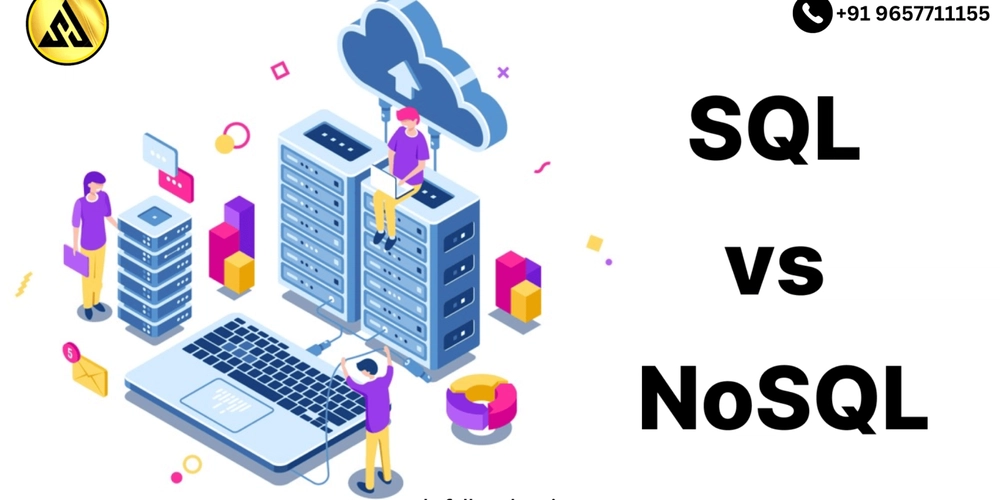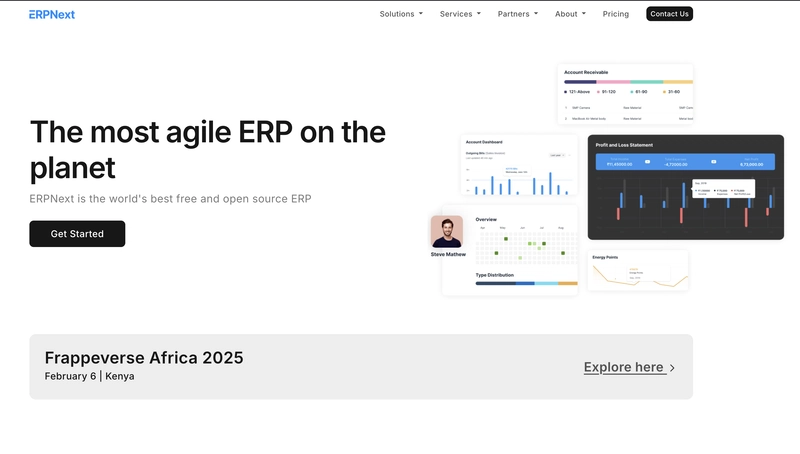Bridging the Gap: Java JPA, ORM, and the Database-Application Relationship
In modern software development, applications frequently interact with databases to store and retrieve persistent data. Java Persistence API (JPA) and Object-Relational Mapping (ORM) technologies have become indispensable tools for simplifying this interaction, allowing developers to work with objects in their code rather than wrestling with raw SQL queries. This article explores the core concepts of JPA, ORM, and their crucial role in bridging the gap between applications and databases. The Challenge: Object-Relational Impedance Mismatch Traditional databases are relational, organizing data into tables with rows and columns. Java, on the other hand, is an object-oriented language, where data is represented as objects with properties and methods. This difference, known as the "object-relational impedance mismatch," creates a challenge when trying to seamlessly integrate these two paradigms. Directly mapping objects to database tables and vice-versa can be complex, tedious, and error-prone. ORM: The Mediator This is where ORM comes in. ORM acts as a bridge between the object-oriented world of the application and the relational world of the database. It handles the mapping of objects to database tables, and vice-versa, allowing developers to interact with the database using object-oriented concepts. Instead of writing SQL queries, developers can work with objects and their relationships, leaving the ORM framework to translate these operations into the appropriate database interactions. JPA: The Standard JPA is a Java API specification that provides a standard way for accessing, persisting, and managing data in relational databases. It defines a set of interfaces and annotations that ORM frameworks can implement. This standardization ensures portability, allowing developers to switch between different JPA-compliant ORM implementations (like Hibernate, EclipseLink, or Apache OpenJPA) without significant code changes. JPA itself doesn't perform the mapping; it provides the blueprint for how it should be done. How JPA and ORM Work Together Entity Definition: Developers define entities, which are Java classes that represent database tables. Annotations (like @Entity, @Table, @Id, @Column) are used to map these entities to their corresponding database tables and columns. Persistence Context: JPA manages a persistence context, which acts as a cache for entities. When an entity is retrieved from the database, it's stored in the persistence context. Subsequent operations on the entity within the same context are tracked, and changes are only persisted to the database when the transaction is committed. Object-Relational Mapping: The ORM framework (e.g., Hibernate) uses the metadata provided through JPA annotations to perform the object-relational mapping. It knows how to translate object operations into SQL queries and how to populate objects with data retrieved from the database. Querying: JPA provides a powerful query language called JPQL (Java Persistence Query Language), which allows developers to query entities using object-oriented syntax. The ORM framework translates these JPQL queries into SQL queries that are executed against the database. Criteria API provides a programmatic way to build queries. Native SQL queries can also be used if needed. Transactions: Database operations are typically performed within transactions. JPA provides mechanisms for managing transactions, ensuring data consistency and integrity. Benefits of Using JPA and ORM Increased Productivity: Developers can focus on the business logic of their application rather than writing complex SQL queries. Improved Code Maintainability: The code becomes cleaner and easier to understand, as the mapping logic is handled by the ORM framework. Database Portability: Switching between different databases becomes easier, as the application code is decoupled from the specific database dialect. Enhanced Data Integrity: ORM frameworks can help enforce data integrity constraints, reducing the risk of data inconsistencies. Reduced Development Time: Using JPA and ORM significantly reduces the time required to develop database-driven applications. The Database-Application Relationship Revisited JPA and ORM act as a crucial layer between the application and the database. They abstract away the complexities of database interaction, allowing developers to work with objects in a more natural and efficient way. This abstraction simplifies development, improves maintainability, and enhances the overall quality of database-driven applications. By understanding the core concepts of JPA and ORM, developers can effectively leverage these technologies to build robust and scalable applications.

In modern software development, applications frequently interact with databases to store and retrieve persistent data. Java Persistence API (JPA) and Object-Relational Mapping (ORM) technologies have become indispensable tools for simplifying this interaction, allowing developers to work with objects in their code rather than wrestling with raw SQL queries. This article explores the core concepts of JPA, ORM, and their crucial role in bridging the gap between applications and databases.
The Challenge: Object-Relational Impedance Mismatch
Traditional databases are relational, organizing data into tables with rows and columns. Java, on the other hand, is an object-oriented language, where data is represented as objects with properties and methods. This difference, known as the "object-relational impedance mismatch," creates a challenge when trying to seamlessly integrate these two paradigms. Directly mapping objects to database tables and vice-versa can be complex, tedious, and error-prone.
ORM: The Mediator
This is where ORM comes in. ORM acts as a bridge between the object-oriented world of the application and the relational world of the database. It handles the mapping of objects to database tables, and vice-versa, allowing developers to interact with the database using object-oriented concepts. Instead of writing SQL queries, developers can work with objects and their relationships, leaving the ORM framework to translate these operations into the appropriate database interactions.
JPA: The Standard
JPA is a Java API specification that provides a standard way for accessing, persisting, and managing data in relational databases. It defines a set of interfaces and annotations that ORM frameworks can implement. This standardization ensures portability, allowing developers to switch between different JPA-compliant ORM implementations (like Hibernate, EclipseLink, or Apache OpenJPA) without significant code changes. JPA itself doesn't perform the mapping; it provides the blueprint for how it should be done.
How JPA and ORM Work Together
Entity Definition: Developers define entities, which are Java classes that represent database tables. Annotations (like
@Entity,@Table,@Id,@Column) are used to map these entities to their corresponding database tables and columns.Persistence Context: JPA manages a persistence context, which acts as a cache for entities. When an entity is retrieved from the database, it's stored in the persistence context. Subsequent operations on the entity within the same context are tracked, and changes are only persisted to the database when the transaction is committed.
Object-Relational Mapping: The ORM framework (e.g., Hibernate) uses the metadata provided through JPA annotations to perform the object-relational mapping. It knows how to translate object operations into SQL queries and how to populate objects with data retrieved from the database.
Querying: JPA provides a powerful query language called JPQL (Java Persistence Query Language), which allows developers to query entities using object-oriented syntax. The ORM framework translates these JPQL queries into SQL queries that are executed against the database. Criteria API provides a programmatic way to build queries. Native SQL queries can also be used if needed.
Transactions: Database operations are typically performed within transactions. JPA provides mechanisms for managing transactions, ensuring data consistency and integrity.
Benefits of Using JPA and ORM
- Increased Productivity: Developers can focus on the business logic of their application rather than writing complex SQL queries.
- Improved Code Maintainability: The code becomes cleaner and easier to understand, as the mapping logic is handled by the ORM framework.
- Database Portability: Switching between different databases becomes easier, as the application code is decoupled from the specific database dialect.
- Enhanced Data Integrity: ORM frameworks can help enforce data integrity constraints, reducing the risk of data inconsistencies.
- Reduced Development Time: Using JPA and ORM significantly reduces the time required to develop database-driven applications.
The Database-Application Relationship Revisited
JPA and ORM act as a crucial layer between the application and the database. They abstract away the complexities of database interaction, allowing developers to work with objects in a more natural and efficient way. This abstraction simplifies development, improves maintainability, and enhances the overall quality of database-driven applications. By understanding the core concepts of JPA and ORM, developers can effectively leverage these technologies to build robust and scalable applications.






















































.jpg)
%20Abstract%20Background%20112024%20SOURCE%20Amazon.jpg)





















































































































![[The AI Show Episode 142]: ChatGPT’s New Image Generator, Studio Ghibli Craze and Backlash, Gemini 2.5, OpenAI Academy, 4o Updates, Vibe Marketing & xAI Acquires X](https://www.marketingaiinstitute.com/hubfs/ep%20142%20cover.png)































































































































![From drop-out to software architect with Jason Lengstorf [Podcast #167]](https://cdn.hashnode.com/res/hashnode/image/upload/v1743796461357/f3d19cd7-e6f5-4d7c-8bfc-eb974bc8da68.png?#)




































































































.png?#)





.jpg?#)
































_Christophe_Coat_Alamy.jpg?#)










































































































![Rapidus in Talks With Apple as It Accelerates Toward 2nm Chip Production [Report]](https://www.iclarified.com/images/news/96937/96937/96937-640.jpg)









































































































































